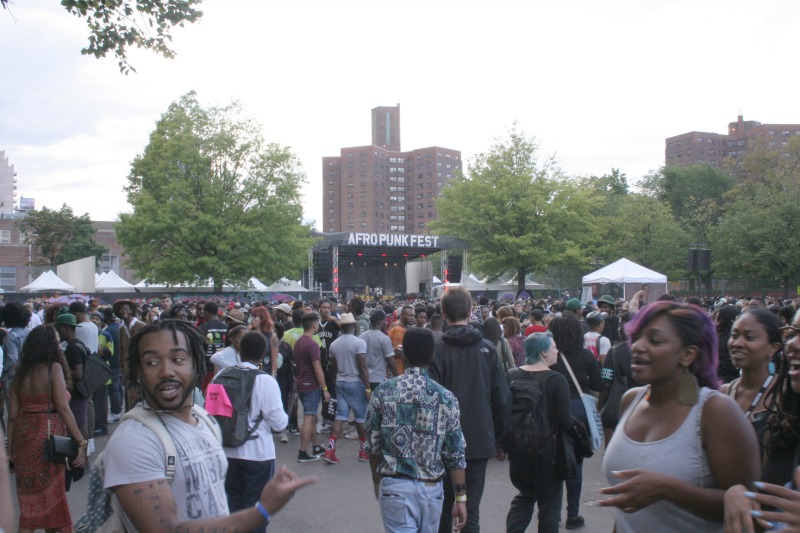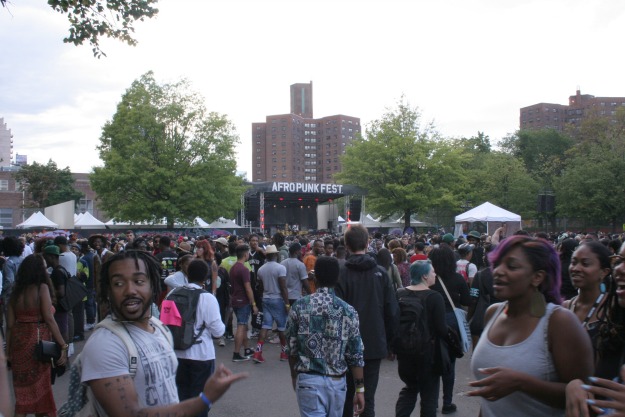This article originally appeared on Forbes.com on Thursday, August 21, 2014
In his book, Who’s Afraid of Post-Blackness, author and MSNBC host Toure noted: “If there are 40 million black people, then there are 40 million ways to be black.”
Of course, marketers can’t be expected to understand each individual in a group. Nor should they only look at an undifferentiated mass. It’s smarter to begin exploring movements and networks. When it comes to diversity within the black consumer segment, Afropunk or black alternative culture, is worth a serious look.
If numbers hold, 60,000 people will converge on Commodore Barry Park in Brooklyn, NY, this weekend for the 10th annual Afropunk Festival, a two-day celebration of the music and culture of the black alternative set. Music is a useful window into Afropunk culture. “We define Afropunk [music] as anything that’s not mainstream hip hop or mainstream R&B,” says Jocelyn Cooper who, along with her partner Matthew Morgan, produces the festival.
In a world that still equates “black cool” with hip hop (see Toyota’s off-tone Swagger Wagon 2), Afropunk is “the other black experience.” Rather than marketers’ narrow assumptions about black people—everyone loves hip hop and basketball, for example—Afropunk serves as a rallying point for those who favor the unconventional in music, fashion, comics, sci-fi, comedy, film and visual art. While the name may conjure notions of black people in colored fro-hawks, leather jackets and Dr. Martens (a first time sponsor this year) who only listen to punk rock, this year’s festival boasts a wide-ranging lineup including Sharon Jones and the Dap-Kings (funk); Lianne La Havas and Valerie June (folk); Meshell Ndegeocello (neo-soul); Body Count (thrash metal); punk icons Bad Brains; SZA and Gordon Voidwell (alt R&B); King Britt and Shabazz Palaces (alt hip hop); Tamar-Kali (hard rock); and many more.
“The lineups are always of and ahead of their time, and this year might be the strongest yet,” says music journalist Jem Aswad, a former editor at SPIN, Billboard and MTV News.
Afropunk is a left-of-center creative community that’s been growing under the radar. Over the last few years, creators who share the ethos are making the leap to greater visibility: Singer Janelle Monae is the face of Cover Girl; poet Saul Williams and Tony-Award winner Stew have been on Broadway; Peabody Award-winning Comedy Central duo Key & Peele are set for their fourth season; acclaimed visual artists Sanford Biggers and Wangechi Mutu exhibit internationally; filmmaker and Sundance winner Ava DuVernay is moving to bigger budget projects. The list goes on.

Janelle Monae. (Photo credit: Wikipedia)
The Afropunk movement started with James Spooner and Matthew Morgan’s 2003 documentary Afro-Punk, and it highlighted a cultural shift that had been underway at least since 1985 when Living Colour’s Vernon Reid, cultural critic Greg Tate and filmmaker Konda Mason formed the Black Rock Coalition to both support left-of-center black musicians and to agitate for change in the highly restrictive music industry. The black alt community mushroomed in 2004 with the advent of the social age (MySpace in 2004, YouTube in 2005, and Facebook in 2006), which made geography irrelevant. Those who considered themselves “different” were able to identify and connect with like minds.
Black people have always been diverse. Though there’s research to prove it, most marketers aren’t paying attention. Says Kevin Brockenbrough, VP and planning director at Burrell Communications, “There are several sophisticated segmentation models out there that reflect just how different African Americans are from one another.” Unfortunately, those insights don’t seem to show up in much marketing to this diverse black consumer. “Shallow is ‘good enough’ for a lot of folks,” Brockenbrough explains. “Truly understanding Black customers takes time and money. When budgets get cut, authenticity is replaced by ‘least common denominator’ thinking, and the things that make us unique don’t get explored.”
Festival partner Cooper’s experience pitching the festival to brands bears this out. “Most brands don’t recognize this truly influencer audience,” she says. Instead, they take the path of least resistance: They enlist a celebrity.“So it’s kind of a proxy for the consumer,“ says Cooper.
The effect is to distance marketers from the consumers they say they want to engage. Music journalist Aswad, speaking about the Festival itself, notes, “It’s a best-kept-secret right in the music industry’s backyard, even though they have to turn away hundreds of people every year. And although the Pitchfork set and industry intelligentsia are aware of it, I’d say the biz at large sleeps on it pretty seriously. “
This growing and vibrant audience—Cooper cites a reach of 3 million people via Afropunk’s digital and social channels—was the subject of a 2012 study by Afropunk in partnership with Galileo Research & Strategy Consultancy. The study surveyed 950 members of the Afropunk community and found that 45% felt that brands didn’t get them. According to Galileo co-founder Sarah Fitzharding, 45% also say that when they find something new they turn others onto it. They’re also highly educated, she notes, with 90% of respondents indicating that they have “some college” vs. 57% of the general population and 57% of black consumers overall.
Authenticity is key for this group. They’re most proud of staying true to themselves. So it’s no surprise that they indicated an appreciation for socially responsible brands that stand by what they do. Also, Galileo co-founder Fitzharding notes, “They choose brands that set them apart from the generic masses.”
There’s tremendous untapped potential here. The good news is that some brands are waking up to the audience. In addition to returning sponsor Red Bull , the festival has the support of sneaker brand Pony and iconic boot maker Dr. Martens. The health and beauty category is represented by first-time partner Pantene. The beauty brand, says Cooper, gets the digital and social reach of the festival and is bringing its popular online activation “Afro Of The Day” on-site this weekend.
Based on the research, Fitzharding offered this assessment of the Afropunk audience: “We’re not talking about tiny numbers. We are talking about millions of people.” She added: “And within that, we are talking about influencers.”
Note: I mis-quoted Fitzharding’s “some college” stats. It should be 50% for black consumers overall.


